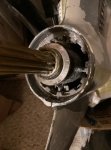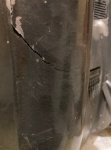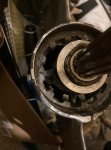Wood Zeppelin
New member
I have a crack in the housing around the propeller shaft.
The first question is: Does anyone know how/why this happens?
The second question, where do I find an affordable replacement (used?).
The first question is: Does anyone know how/why this happens?
The second question, where do I find an affordable replacement (used?).




